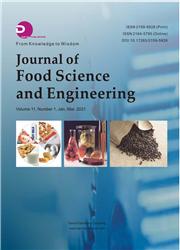Multiple Antimicrobial Resistance of Extended Spectrum Beta-Lactamase-Producing Escherichia coli from Small-Scaled Poultry Farms and Retail Chicken
引用次数: 0
Abstract
Antibiotics used for agricultural purpose has contributed to the increased prevalence of antibiotic-resistant bacteria. The goal of this study was to investigate the prevalence and antimicrobial resistance of ESBL-producing E. coli in small-scaled poultry farms and retail chicken. The cultured E. coli isolates were subjected to phenotypic tests, susceptibility tests, and the polymerase chain reaction for detection of blaCTX-M, blaSHV, and blaTEM genes. From 120 samples each of chicken feces, retail chicken, soil and chicken feed, ESBL-producing E. coli isolates were detected in 75.9%, 63.6%, 39.2%, and 13.3% of the samples, respectively. Minimum inhibitory concentration (MICs) values indicated that ESBL-producing E. coli were resistance to ampicillin (MIC ≥ 32 μg/mL), gentamicin (MIC ≥ 16 μg/mL), cefotaxime (MIC ≥ 4 μg/mL) and ceftriaxone (MIC ≥ 4 μg/mL), respectively. The total resistance for imipenem was also observed at 1.0% (MIC ≥ 4 μg/mL) and none of the isolates were resistant to ceftazidime (MIC ≥ 16 μg/mL). ESBL-producing E. coli from chicken feces and retail chicken carried blaSHV gene at a rate of 6.8% and 5.7%, respectively and blaCTX-M gene was also revealed at 2.9% in retail chicken. Moreover, ESBL-producing E. coli isolated from soil harbored blaSHV and blaCTX-M genes at 5%. None of the feed samples yielded ESBLs genes. Twenty three resistance patterns were observed for multi-resistant ESBL-producing E. coli. This study highlights the prevalence of multi-antimicrobial resistant ESBL-producing E. coli in small-scaledpoultry farms and retail chicken, hence the need to review poultry management practices to minimize the occurrence.小规模家禽养殖场和零售鸡肉产广谱β -内酰胺酶大肠杆菌的多重耐药性
用于农业用途的抗生素增加了耐抗生素细菌的流行。本研究的目的是调查小规模家禽养殖场和零售鸡中产生esbl的大肠杆菌的流行情况和耐药性。对培养的大肠杆菌分离株进行表型试验、药敏试验和聚合酶链反应检测blaCTX-M、blaSHV和blaTEM基因。从鸡粪、零售鸡、土壤和鸡饲料各120份样品中检出产esbl的大肠杆菌,检出率分别为75.9%、63.6%、39.2%和13.3%。最低抑菌浓度(MIC)值表明,产esbl大肠杆菌对氨苄西林(MIC≥32 μg/mL)、庆大霉素(MIC≥16 μg/mL)、头孢噻肟(MIC≥4 μg/mL)和头孢曲松(MIC≥4 μg/mL)均耐药。对亚胺培南的总耐药率为1.0% (MIC≥4 μg/mL),对头孢他啶(MIC≥16 μg/mL)无耐药。产esbl的鸡粪大肠杆菌和零售鸡的blaSHV基因携带率分别为6.8%和5.7%,零售鸡的blaCTX-M基因携带率为2.9%。此外,从土壤中分离出的产esbl的大肠杆菌中含有5%的blaSHV和blaCTX-M基因。饲料样品中没有产生ESBLs基因。产esbl多重耐药大肠杆菌共观察到23种耐药模式。该研究强调了小规模家禽养殖场和零售鸡肉中产生多种抗微生物药物耐药性esbls的大肠杆菌的流行,因此需要审查家禽管理实践以尽量减少发生。
本文章由计算机程序翻译,如有差异,请以英文原文为准。
求助全文
约1分钟内获得全文
求助全文

 求助内容:
求助内容: 应助结果提醒方式:
应助结果提醒方式:


